What is MIL-STD-810H?
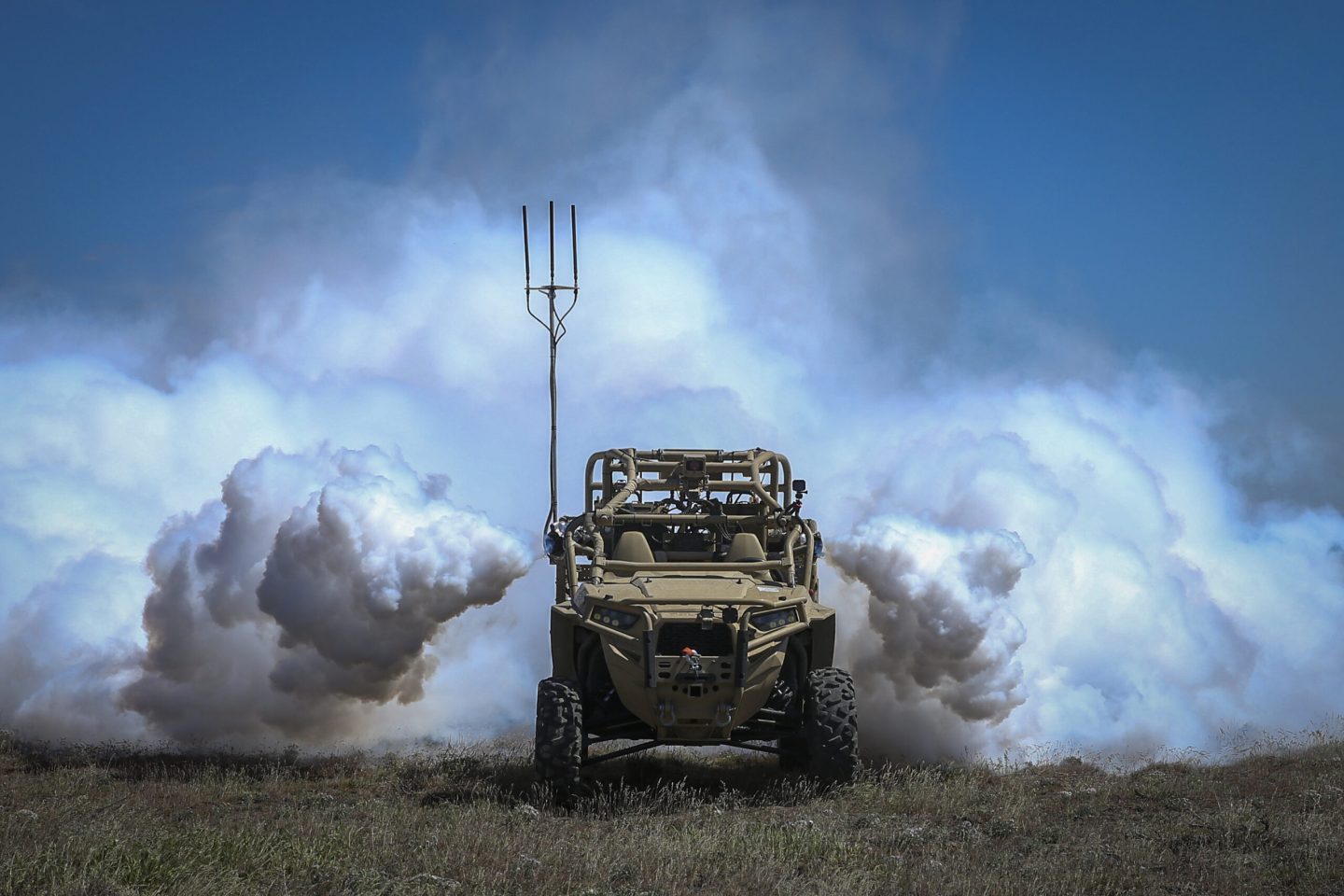
MIL-STD-810 is one of the most well-known mil-spec standards with widespread usage as a benchmark for ensuring high-performance in austere environmental conditions. In this blog, we take a detailed look at the latest revision – MIL-STD-810H – and what is required for equipment and materiel to pass this rigorous set of standards.
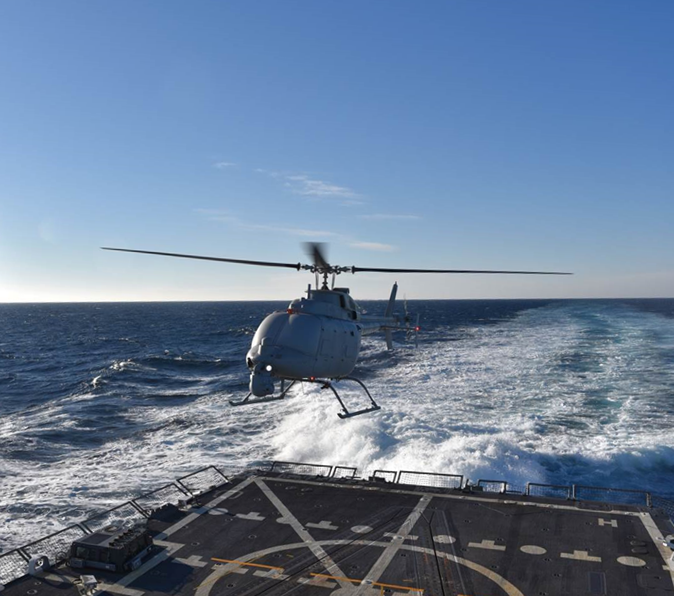
Download the MIL-STD-810H Specification
MIL-STD-810H PDFIf you design or manufacture equipment for defense applications, there is a good chance you’ve heard of MIL-STD-810. The first version of MIL-STD-810 was released in 1962 with direct predecessor specifications going to back to 1945.
Environmental standards and test methods contained in MIL-STD-810 – titled Environmental Engineering Considerations And Laboratory Tests – are required for most US Department of Defense (DoD) programs to ensure that deployed equipment will survive in extreme conditions throughout its lifecycle. Every component integrated into systems and systems of systems must be designed, integrated, and tested with these environmental standards top of mind.
Meeting MIL-STD-810 standards ensures ability for systems to endure real-world stress events while still functioning reliably. This includes vibration, shock (including gunfire and ballistic shock), extreme temperature ranges, humidity, rain protection, sand and dust ingress, explosive atmosphere and fungus.
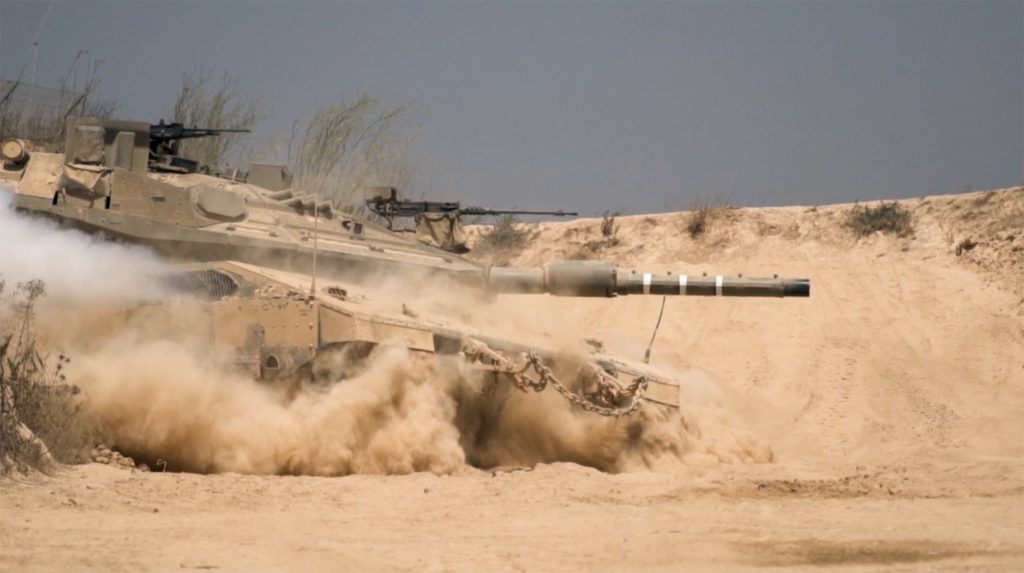
Combat vehicles and integrated equipment are deployed in austere environments and must be hardened to MIL-STD-810H specifications such as sand and dust ingress protection to reliably operate under harsh conditions.
A .pdf of the complete MIL-STD 810H standard can be found here, along with all the previous iterations going back to the original base document.
What’s a MIL-STD?
MIL-STD is an abbreviated term the US Department of Defense (DoD) uses for military standards, and these can also be referred to as MIL-SPEC, or military specifications. MIL-STDs are detailed documents that are used by the US DoD and industry to ensure that technology and equipment meets environmental specifications.
MIL-STDs are often applicable to industrial and commercial use-cases in which equipment is subject to harsh environmental conditions.
The US DoD’s Defense Standardization Program notes that standardization documents also promote commonality and interoperability among military departments and US allies, and limit the different types of equipment in the supply system.
These MIL-STD documents support a wide range of groups that are involved in the materiel acquisition process, including Program Managers, Environment Engineering Specialists (EES) and the wider design, test, and evaluation communities. They are especially important to industry as it allows them to design and develop products with clear guidance on what it takes to meet these strict military standards.
If a piece of equipment is described as meeting military performance specifications or a military standard – such as MIL-STD 810 – then it has been meticulously designed and manufactured to pass the rigorous tests that are outlined in an official DoD MIL-STD document.
MIL-STD-810 is a tri-service specification with widespread usage by the US Army, Navy, and Air Force.
Each MIL-STD document has a unique number that identifies the document (each document will focus on a specific area) and a letter to denote its version or revision – hence MIL-STD 810H.
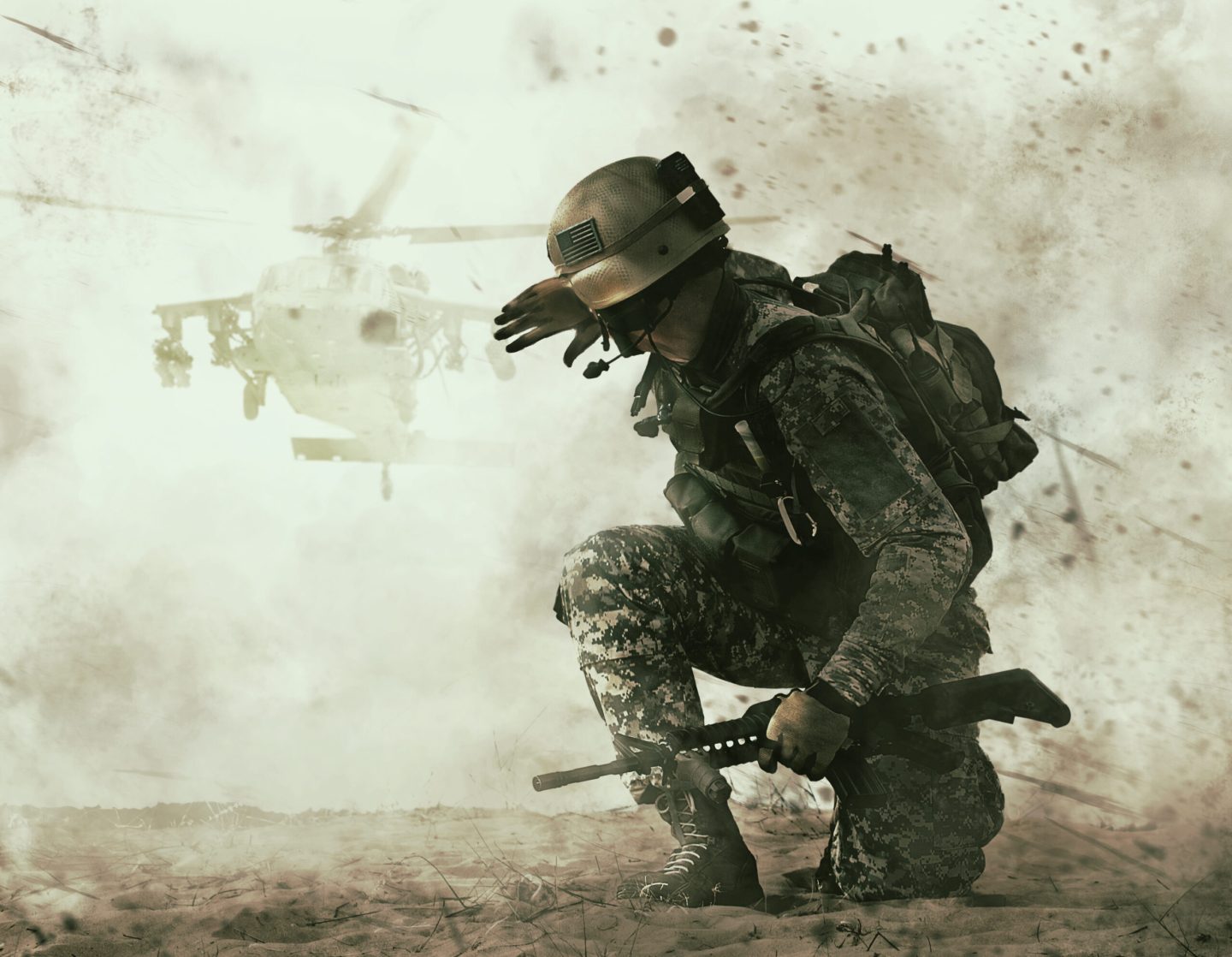
For more information on MIL-STDs, check out our post: "What is a rugged computer?"
View the Blog PostWhat’s new in MIL-STD 810H?
The latest ‘H’ version of MIL-STD-810 was released on January 31, 2019. The previous ‘G’ version was first introduced in 2008. According to the DoD, the newest MIL-STD-810H “recognizes that the environmental design and test tailoring process has expanded to involve a wide range of managerial and technical interests.”
It is important to note that MIL-STD 810H does not “impose design or test specifications”, and instead there is an emphasis placed on “tailoring.” MIL-STD-810H therefore describes an environmental tailoring process that ensures realistic materiel designs and test methods are based on system performance requirements.
The standard is split into three parts:
- Part One – General Program Guidelines: Includes the engineering guidelines and defines the approach for acquiring systems that can withstand extreme climatic, shock and vibration requirements.
- Part Two – Laboratory Test Methods: Is an “integral” part of the tailoring process and contains laboratory test methods. This is where engineers will gather most information regarding testing procedures.
- Part Three – World Climatic Regions: This provides planning guidance for “realistic consideration” of climatic conditions in the research, development, test, and evaluation (RDTE) of materiel and materials.
Part two is particularly important for companies such as Systel that are designing and testing defense solutions. This part sets out the whole gamut for laboratory test methods (contents found on p.80) for each specific environmental standard, and these are numbered 500 to 528. The test methods are:
- Test Method 500.6 Low Pressure (Altitude)
- Test Method 501.6 High Temperature
- Test Method 502.6 Low Temperature
- Test Method 503.6 Temperature Shock
- Test Method 504.2 Contamination by Fluids
- Test Method 505.6 Solar Radiation (Sunshine)
- Test Method 506.6 Rain
- Test Method 507.6 Humidity
- Test Method 508.7 Fungus
- Test Method 509.6 Salt Fog
- Test Method 510.6 Sand and Dust
- Test Method 511.6 Explosive Atmosphere
- Test Method 512.5 Immersion
- Test Method 513.7 Acceleration
- Test Method 514.7 Vibration
- Test Method 515.7 Acoustic Noise
- Test Method 516.7 Shock
- Test Method 517.2 Pyroshock
- Test Method 518.2 Acidic Atmosphere
- Test Method 519.7 Gunfire Shock
- Test Method 520.4 Temperature, Humidity, Vibration, and Altitude
- Test Method 521.4 Icing/Freezing Rain
- Test Method 522.2 Ballistic Shock
- Test Method 523.4 Vibro-Acoustic/Temperature
- Test Method 524.1 Freeze / Thaw
- Test Method 525.1 Time Waveform Replication
- Test Method 526.1 Rail Impact
- Test Method 527.1 Multi-Exciter
- Test Method 528.1 Mechanical Vibrations of Shipboard Equipment (Type I – Environmental and Type II – Internally Excited)
These sections are vital to engineers as they set out the specific procedures that equipment needs to be tested to to meet the standard.
It is important to note that just because a piece of equipment is MIL-STD-810 qualified, it does not mean that it has gone through every laboratory test method and procedure that is set out in Part 2. This would make qualifying an extremely cost and time prohibitive process, which is why there is a focus on tailoring the process as described above, especially when it comes to areas such as where the equipment will be deployed and how it will be used.
Tailoring is vital for MIL-STD-810
Let’s look, as an example, at test method 501.7, which focuses on high temperatures (p.92). This is where tailoring is essential and where the high temperature testing method is used to “evaluate materiel likely to be deployed in areas where temperatures (ambient or induced) are higher than standard ambient”. Here the customer will highlight that this is a key requirement as the equipment is likely to experience high temperatures during its lifecycle.
Each testing method also has specific procedures. In the case of 501.7 high temperature testing, there are three distinct procedures: Procedure I (Storage), Procedure II (Operation), and Procedure III (Tactical-Standby to Operational). The latter procedure tests whether a piece of equipment functions correctly in an operational scenario when it is turned on from a period of being off.
It is a key part of equipment acquisition and testing that specific procedures are identified as relevant to the role(s) to be carried out. After the procedure has been identified, MIL-STD-810 sets out a step-by-step guide on how to test the equipment.
Let’s focus in further on a couple of key MIL-STD-810H test methods:
MIL-STD-810H temperature testing
For high temperature testing, the customer will identify that a piece of equipment will need to meet specific operating and storage temperatures – also called Constant Temperature Exposure – and the tests will then have to follow the procedure and step-by-step list outlined in MIL-STD-810H. Rather than a specific set temperature standard (this actually doesn’t exist in MIL-STD-810), the customer will generally specify their high temperature requirements as part of the tailoring process.
If there is no set temperature for test method 501.7, then the equipment can also be tested in a diurnal cycle – also called Cyclic Temperature Exposure – that simulates a 24-hour period. The MIL-STD-810H temperature range is from Basic Hot (30-43 °C) to Hot Dry (32-49 °C), although as previously mentioned, customer requirements are often much more extreme than this.
If a cyclic test is followed, there must be at least seven cyclic temperature tests for the high temperature storage procedure, and a minimum of three cycles for the operational procedure.
MIL-STD 810 test methods also set out the test facility required, how to establish controls (such as data recording and measurement), and how to deal with test interruptions such as malfunctions.
For low temperatures, a similar process is followed, covered as part of Method 502 of MIL-STD- 810. As part of low temperature testing, the equipment or materiel can also be tested for how easy it is for it to be set up/assembled, operated and disassembled by personnel wearing bulky, cold-weather clothing.
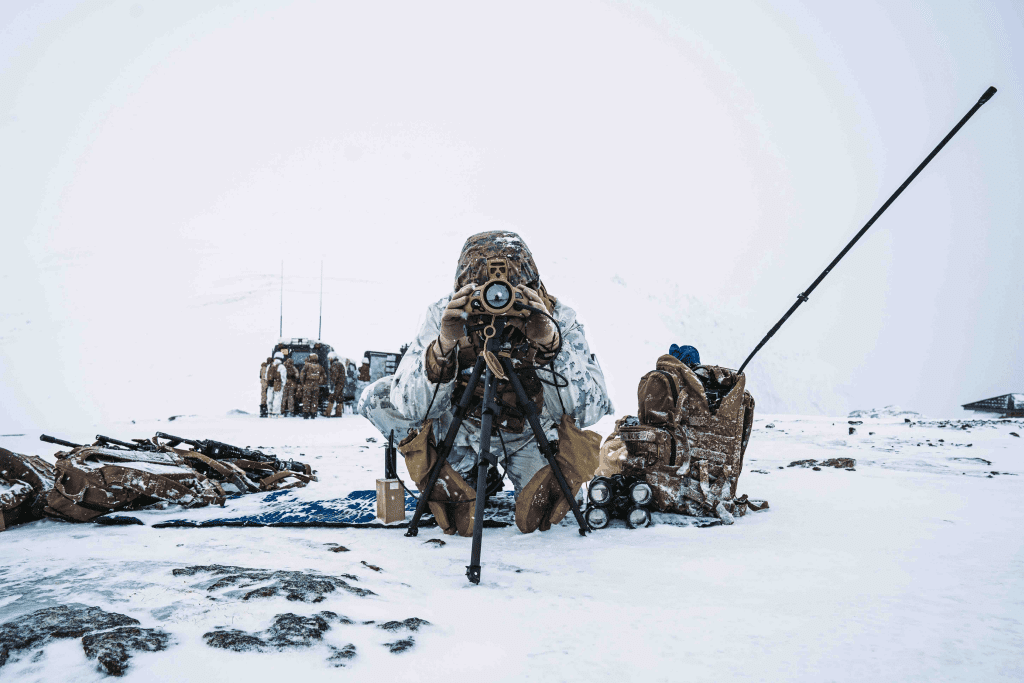
A US Marine participating in Exercise Cold Response 22. Equipment must be hardened to reliably operate in low and high extreme temperatures. (U.S. Marine Corps photo by Sgt. William Chockey, Public Domain)
MIL-STD-810H vibration testing
Another popular and well-established test within MIL-STD-810 is vibration exposure (test method 514), which ensures that equipment can withstand the various conditions it will face during their lifecycle and whether there are any vibration-induced issues, including failing components, chafed wiring and loose components. Unlike temperature testing, customers must state specific values that are set out within MIL-STD-810 as a requirement.
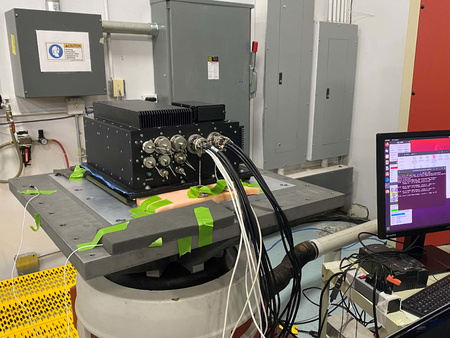
A Systel embedded computer being set up on our in-house shock and vibration table to undergo MIL-Composite Two-Wheeled Trailer operational vibration test: MIL-STD-810H, Method 514.8, Procedure I, Category 4.
Vibration exposure is another test method where tailoring is essential, and the document sets out a substantial amount of information in annexes including specific vibration profiles for various platforms, such as jet and propellor cargo aircraft, ground vehicles, and rotary-wing aircraft. For a fixed-wing jet aircraft for example, vibration can be created by the engines; turbulent aerodynamic flow over the airframe; turbulent air when weapon bay doors or other structures are deployed; and airframe structural motions including landing and maneuvering.
The customer or the manufacturer can set out which profile is required, and like the 501.7 temperature method there are specified step-by-step testing procedures to follow including:
- Procedure I – General vibration
- Procedure II – Loose cargo transportation
- Procedure III – Large assembly transport (not applicable to component manufacturers)
- Procedure IV – Assembled aircraft store captive and free flight (not applicable to component manufacturers)
There are also instances where there are specific profiles for a type of vehicle that will have to be tested for (such as an M1 Abrams Main Battle Tank), although this vehicle-specific data does not reside in MIL-STD- 810.
MIL-STD 810H shock testing
Vibration is commonly paired with shock when it comes to MIL-STD 810 testing.
Shock testing is found under test method 516 (p.548), and this section is designed to give confidence that materiel and equipment can physically and functionally withstand the shocks that military equipment regularly faces, including in its handling, transportation and service life.
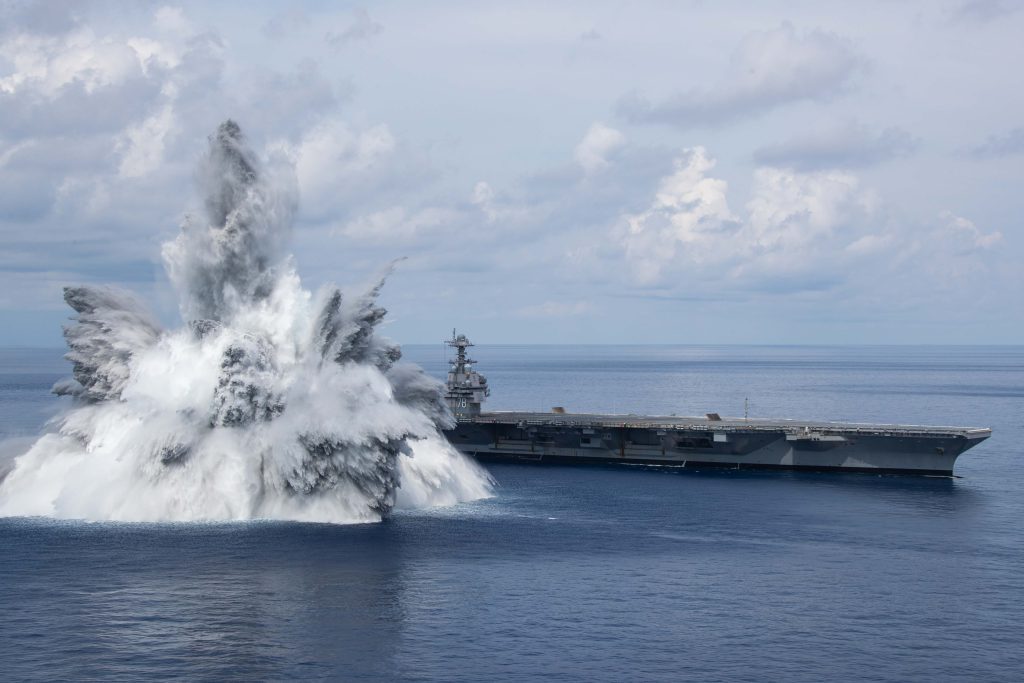
The aircraft carrier USS Gerald R. Ford (CVN 78) successfully completes the third and final scheduled explosive event for Full Ship Shock Trials while underway in the Atlantic Ocean, Aug. 8, 2021. The U.S. Navy conducts shock trials of new ship designs using live explosives to confirm that our warships can continue to meet demanding mission requirements under harsh conditions they may encounter in battle. (U.S. Navy Photo by Mass Communication Specialist 3rd Class Jackson Adkins)
MIL-STD-810 shock specifications and testing allow the military to understand how equipment should be packaged, stowed, and mounted in order to retain its form and functionality when subject to extreme shock events. It is also a key test in ensuring that the piece of materiel or equipment does not create any hazards, including parts being ejected, in the case of an event such as a crash. Common testing technologies used in this testing are accelerometers, strain gauges and laser Doppler vibrometers.
Shock effects due to pyrotechnic device initiation are categorized under test method 517.3 (Pyroshock), as are shocks due to very high level localized ballistic impacts (test method 522.2 Ballistic Shock) and pressure impacts from gun firing (method 519.8 Gunfire Shock).
MIL-STD-810H low pressure testing
Another testing method that is important to carry out to ensure that equipment does not pose a hazard to personnel and platforms is test method 500 (Low Pressure), which incorporates rapid or explosion decompression scenarios for aircraft.
This test method includes a total of four procedures: Procedure I (Storage); Procedure II (Operation); Procedure III (Rapid Decompression); and Procedure IV (Explosive Decompression). The latter procedure would see a piece of equipment installed in a chamber with an altitude representative of 8,000ft, and then the chamber air pressure reduced to a test altitude of 40,000ft in “not more than 0.1 seconds” to represent the explosive nature of the decompression.
Areas such as temperature, vibration and shock are generally the most sought after requirements in material acquisition planning, but of course there are a number of other tests that customers can require that reside in MIL-STD 810, such as icing/freezing rain, immersion, sand and dust, and solar radiation. Just like the tests described above, these have specific test methods and procedures in place to ensure equipment is highly ruggedized for the environments they face.
Systel’s MIL STD-810H pedigree
With 33 years of experience designing, manufacturing, testing, and supporting rugged computer hardware systems for installations and deployments in across innumerable platforms and vehicles in every harsh environment on the planet, our engineering and test teams have deep expertise with MIL-STD-810. We work closely with our customers to ensure that our ruggedized solutions are designed to meet and qualified to the rigorous test methods set out in MIL-STD-810H per our customers’ exacting requirements. We have in-house test capabilities including temperature, shock, and vibration, and work closely with trusted 3rd party testing agencies to certify our products across the full suite of test methods.
Let's Talk!
Have questions or want to learn more?
Contact our team and let’s talk!